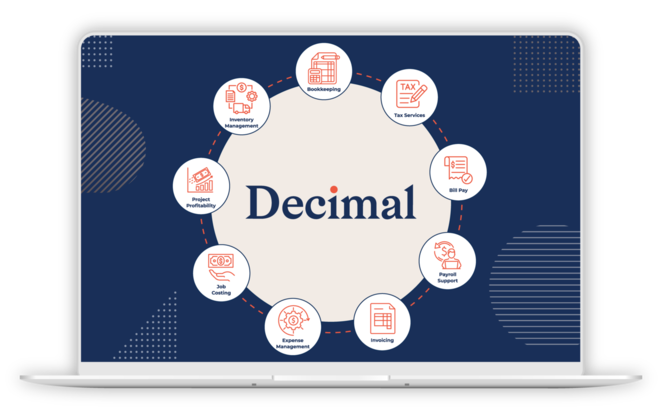Editor's Note: This article has been updated to correct inaccuracies regarding QuickBooks Bill Pay's payment options and service tiers and to add new information about features available to accounting professionals. We appreciate Intuit’s feedback and commitment to accuracy.
Intuit has announced enhancements to its QuickBooks Bill Pay platform, introducing a new suite of features designed to streamline bill payments and support more complex accounts payable (AP) workflows. These updates are part of Intuit’s broader strategy to expand functionality within QuickBooks Online, with a focus on automation, control, and cash flow visibility for small businesses and the professionals who serve them.
Expanding the Toolset for Small Business Finance
The new features available through QuickBooks Bill Pay aim to improve the efficiency and accuracy of bill payment processes. Notably, users can now leverage:
- Customizable approval workflows, which allow businesses to establish review and authorization steps tailored to their internal processes.
- Multi-user access with role-based permissions, giving different team members defined responsibilities within the bill pay system.
- Automated bill capture, enabling users to import bills via email or mobile device and have relevant data extracted automatically.
- Multiple payment options, including ACH transfers and physical checks, provide flexibility in how bills are settled.
These enhancements are designed to be embedded within the broader QuickBooks Online experience, eliminating the need to rely on third-party applications for basic AP functionality.
Implications for Accounting Professionals
These updates support a more streamlined and scalable approach to managing payables for professionals working in client accounting services (CAS). The availability of custom workflows and user roles is particularly relevant for firms that serve growing or mid-sized clients with more formalized internal controls.
Additionally, by integrating bill capture and approval features directly into QuickBooks, firms can reduce the manual workload involved in bill management, while offering clients better visibility into payment timelines and cash flow forecasts.
While the enhancements are not a substitute for dedicated AP platforms designed for enterprise environments, they represent a notable evolution in the native tools available to small businesses using QuickBooks — and by extension, the professionals managing those books.
Tiered Access and Subscription Options
QuickBooks Bill Pay is now available in two tiers:
- QuickBooks Bill Pay – Basic: Included with all QuickBooks Online subscriptions at no additional cost. This version includes essential bill tracking and payment options. Five free ACH payments are included each month.
- QuickBooks Bill Pay—Premium: This tier is available for an additional monthly fee and includes unlimited 1099 e-filing and 40 ACH payments each month for no additional fee.
- QuickBooks Bill Pay - Elite: Includes all the features in the Premium plan, plus advanced features such as user roles and permissions and bill approval workflows.
The tiered approach allows businesses to choose a level of functionality aligned with their operational complexity and growth stage. The standard delivery time for an ACH payment can take 3–5 business days, while a check can take 8–10 business days. Bill Pay also offers Faster ACH for an additional fee - Faster ACH payments are usually delivered the next business day if you schedule them before 5PM PT the prior business day.
Additional Updates for ProAdvisors
In response to feedback from the accounting community, QuickBooks has introduced two additional features designed to further streamline client onboarding and service management:
- Bill Pay Subscription at Client Setup: ProAdvisors can now add a Bill Pay subscription during the process of signing a client up for QuickBooks Online within the Add Client experience. This addition simplifies initial setup and ensures that clients have access to enhanced AP capabilities from day one.
- Requesting a Processing Limit Increase: Accountants can now request a Bill Pay processing limit increase on behalf of their clients directly within QuickBooks. To initiate a request, a ProAdvisor must navigate to Settings > Expenses under Bill Pay and select “Request a New Limit.” You must be designated as Primary Admin or Company Admin within QuickBooks to request a limit increase.
These additional capabilities offer accounting professionals more flexibility and control when managing client accounts, further enhancing the overall efficiency of service delivery.
Positioning Within a Competitive Landscape
These updates align with broader trends in the accounting technology space, where software providers are increasingly embedding more robust features into their core platforms. By expanding its AP features natively, QuickBooks is positioning itself as a more comprehensive tool for small businesses, while also addressing some of the limitations that previously required third-party integrations.
The move may also appeal to firms looking to consolidate software vendors or streamline their technology stacks—especially those working with clients who rely heavily on QuickBooks Online for daily operations.
A Continued Focus on Automation and Advisory Enablement
As automation continues to reshape the bookkeeping and accounting landscape, tools like QuickBooks Bill Pay play a role in enabling firms to shift away from transactional tasks and focus more on advisory services. By reducing time spent on bill entry, approvals, and payments, accountants can reallocate resources toward cash flow planning, forecasting, and other consultative offerings.
For the CAS community, staying informed about such updates is key to advising clients on best-fit tools and practices — particularly when those tools are already part of the client’s existing ecosystem.
.png?width=150&height=63&name=TWRlogo-regmark_blueblack%20(1).png)
.png)










Do you have questions about this article? Email us and let us know > info@woodard.com
Comments: